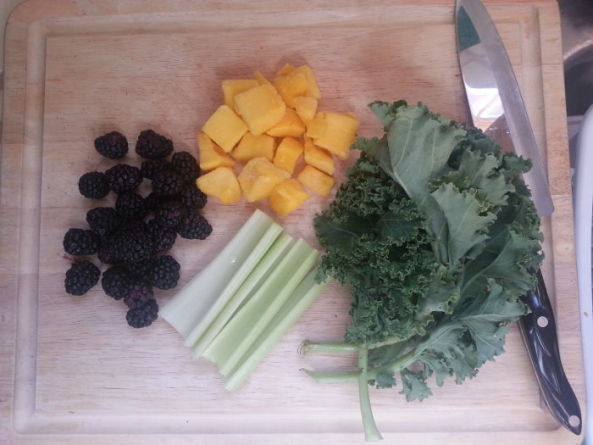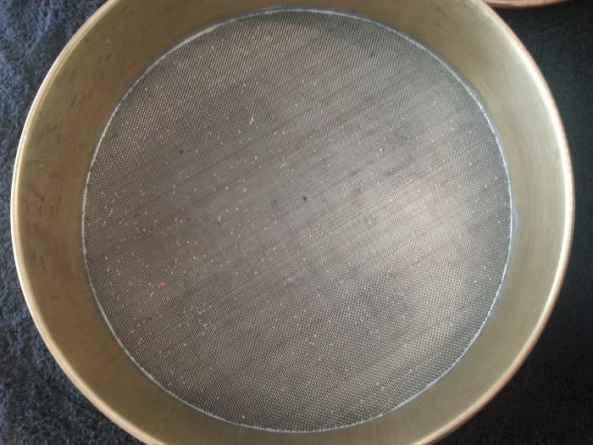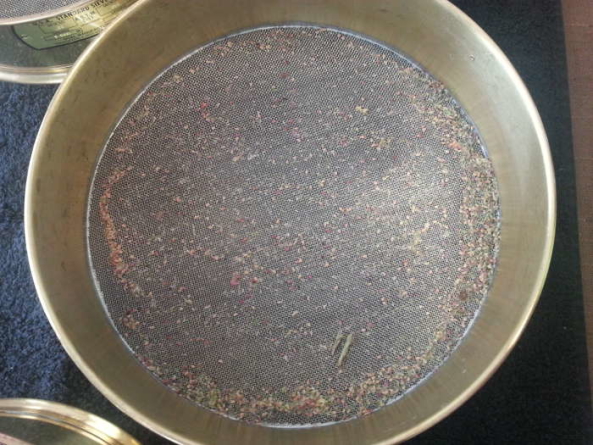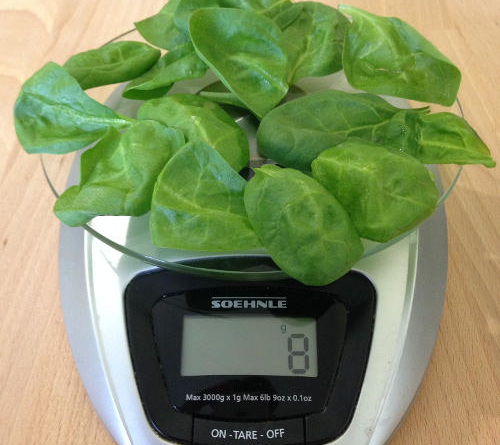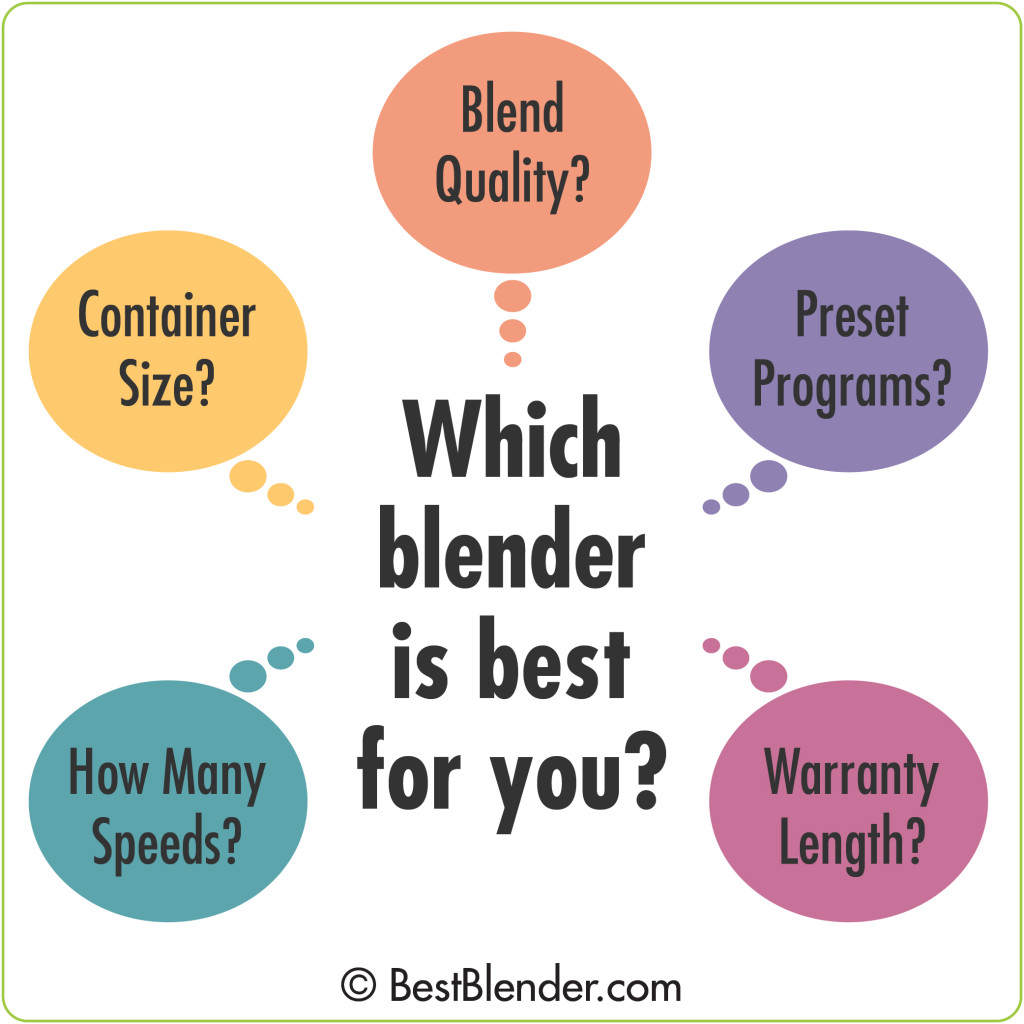
Want the blender that’s best for you, based on your budget and your goals? You’ve come to the right place.
Here’s a tip that will save you a bunch of time.
We don’t recommend evaluating all the buttons, materials, and wattages of different blender models as these aren’t really that important.
Here’s the bottom line:
We’ve discovered 3 key factors that make people successful using a blender to achieve their goals.
These are:
1.) The ability to make a variety of healthy recipes they enjoy eating.
2.) A great blend quality.
3.) Fast and Easy Cleanup.
Buyer’s Tip: Already know which features you want? Check out our ingenious Compare Tool to filter the top selling and most-recommended blenders by price, features, and capabilities.
What should I make with my blender?
Is it really important for a blender to be versatile?
Our emphatic answer: YES!
We highly recommend a blender that is good at making all of the recipes that you enjoy eating regularly AND that offer proven health benefits.
You might be wondering:
Does my blender really need to make Hot Soup, Green Smoothies, or Sorbet?
To find out why these are so important, read the “Why Make It?” section for each below recipe…
1.) Green Smoothies
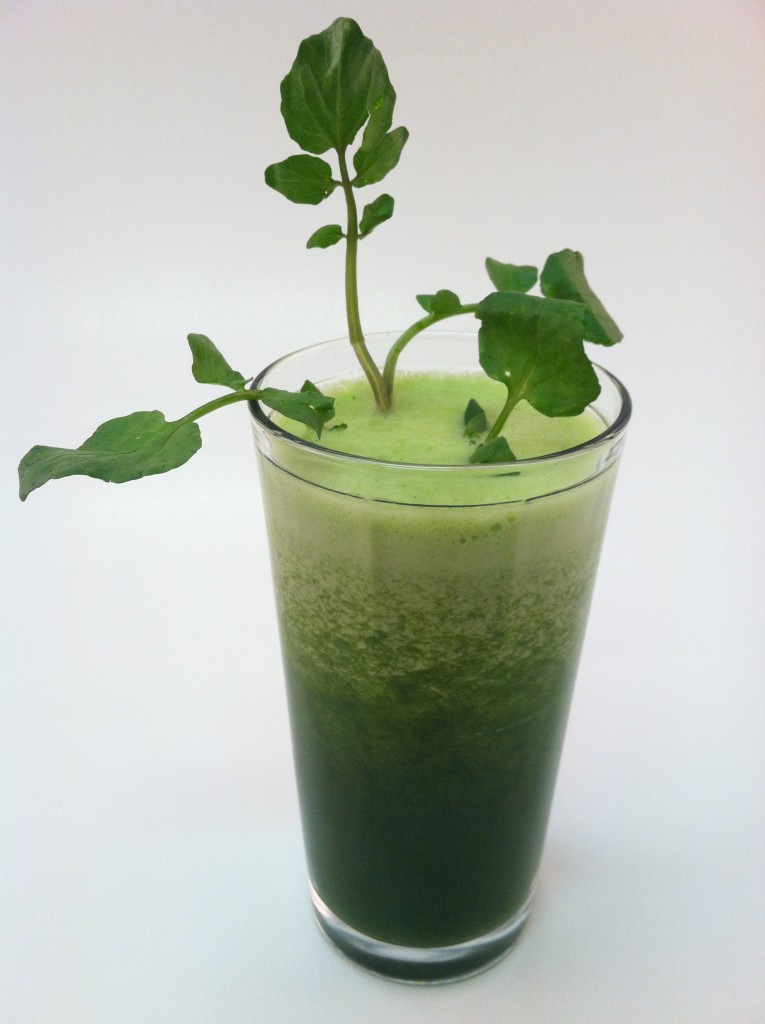
Why make it?
A green smoothie differs from a fruit smoothie in that it requires a blender capable of processing the fibrous parts of green vegetables such as kale, spinach, and celery.
If your goal is to improve your health we recommend including greens in all of your smoothies.
What you need to know
Blend quality plays a major role when blending fibrous greens. To show how big a difference blend quality plays in a typical green smoothie recipe check out our blend quality comparison between two of the top selling blenders.
Here’s the bottom line:
If you don’t use a blender with professional blend quality you’ll be left with chewy (and often bitter) pieces of greens in the smoothie.
The drink itself will be chunky and chewy instead of smooth…
Many people, especially children, are averse to the taste and texture of greens, and if there is even a hint of leftover residue from these in the resulting smoothie we’ve found people won’t want to drink them.
Our Advice: If you want to consume green smoothies regularly we strongly recommend a blender with professional blend quality.
2.) Hot Soups
Why make it?
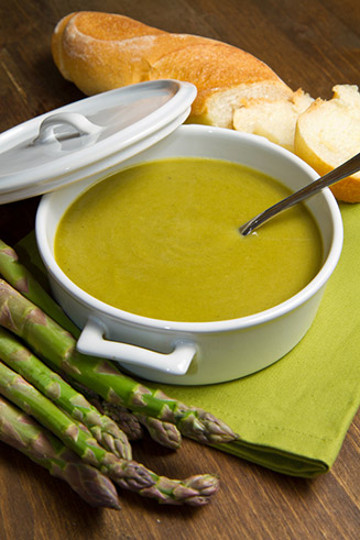
Hot soup is the undiscovered hero of blending.
In our opinion, it’s actually Better Than a Smoothie!
Expert’s Advice: “Once you’ve had your first taste of a hot soup that’s as smooth as silk or a truly velvety, seed- and fiber-free smoothie, you’ll have a heck of a hard time going back.” – J. López-Alt, Culinary Director at Serious Eats
The simple fact is that you’re less likely to crave something sweet and cold when the weather is cooler.
During colder fall and winter months smoothie consumption wanes considerably.
This creates a challenge for those who rely upon smoothies to consume nutrient dense foods.
What’s the solution? Hot Soup!
The great advantage of hot soup is that is allows you to consume the highest health promoting and cancer-fighting foods that you’ll never get in a smoothie.
Want to regularly consume the top 3 anti-cancer vegetables?
Hint: You can’t put them in a smoothie…
Most of these ingredients are just too bitter or earthy tasting to put in a smoothie, but taste so absolutely amazing in a soup that you’ll quickly be addicted. The great thing is that you can consume hot soups year round.
What you need to know
The majority of blender containers do not allow the blending of hot liquids in the container.
Here’s what we mean:
Ninja’s Standard User Manual:
19. CAUTION: DO NOT process hot foods or hot liquids. Allow hot ingredients to cool before [blending]. – source
Breville’s Standard User Manual:
CAUTION: Do not process hot or boiling liquids. Allow to cool before placing into the blender jug. – source
KitchenAid’s Standard User Manual:
IMPORTANT: If blending hot foods or liquids: Operate only on STIR speed. – source
Lower and mid-priced blenders don’t have containers that are rated for use of hot liquids, and in the case of KitchenAid, the warranty won’t allow for blending hot ingredients at a high speed.
This means these blenders can’t be used for hot soups.
So is there a solution?
A work-around solution could be to blend the soup cold and transfer the contents to a microwavable container. However, we don’t recommend microwaving your soup as this has been shown to damage its nutritional value.
One thing to keep in mind:
If you purchase a lower priced blender without professional blend quality you won’t get that silky smooth restaurant style texture, which we’ve found is the key for people to consume it regularly.
Our Advice: Get a blender that can blend hot liquids, make the soup hot in the blender container, and then serve it immediately. Our Compare Tool has a “hot soup” search option allowing you to view only the blenders that are rated to blend hot liquids.
3.) Fruit Smoothies / Thick Shakes
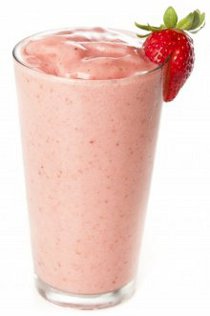
Why make it?
Fruit smoothies are the most commonly made recipe and are one of the best ways to easily add nutrient-dense foods into your diet.
What you need to know
Every blender can make basic fruit smoothies.
However, not all blenders can blend the following 3 types of ingredients, and we recommend getting one that can:
Frozen vs Fresh: Using frozen fruit has 3 main benefits:
A.) Frozen fruit is up to 50% cheaper than fresh.
B.) Buying frozen dramatically extends shelf-life and decreases shopping trips.
C.) Frozen fruit eliminates the need to add ice, making your smoothie more nutrient dense.
Whole vs pre-cut ingredients: Lower priced blenders have a harder time blending larger ingredients. The cheaper the blender, the more work you’ll have to do to finely precut ingredients to avoid having leftover chunks.
Fruits with Seeds: Most blenders aren’t able to pulverize seeds. Not only will pulverizing seeds make the nutrients within them available for absorption, it will also greatly improve the quality of texture and taste.
You might be wondering:
So what does a blender need to blend these types of ingredients?
The Answer: Professional Blend Quality.
We’ve discovered that the better the blend quality the more likely someone is to stick with smoothie making over the long term.
Tip: If you’re making smoothies regularly, spending more up front for a blender with professional blend quality means you’ll recoup your investment from the time and money saved within 3 months.
Our Advice: If you want your fruit smoothies to have a great taste and texture we highly recommend a blender with professional blend quality.
4.) Salsa

Why make it?
This is the most basic task that any blender can do. All the ingredients in salsa are easy for a blender to process, and depending on the desired texture (garnish style vs more smooth restaurant style liquid) a blender should have different speed settings to blend it to your desired texture.
What you need to know
If you are adding cilantro to your smoothie and want it to be blended to a more restaurant style silky texture you may consider getting a blender with professional blend quality, but for making basic garnish-style salsa this is not necessary.
5.) Frozen Desserts (Ice Cream, Sorbet)
Why make it?
One of the biggest challenges people have when trying to lose weight and consume less calorie-dense processed foods is what to do when they get sweet cravings.
Sorbet is one of the #1 options in your arsenal to have when sticking to a healthy diet.
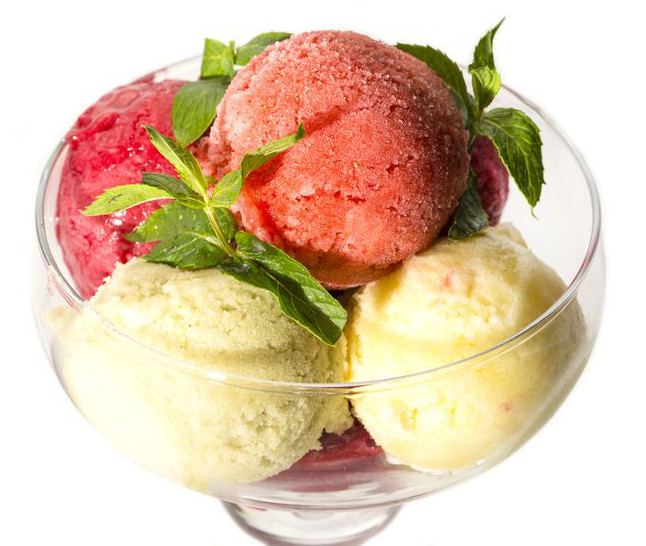
We’ve discovered from experience when you can easily whip up a fresh batch of gourmet quality sorbet (in less than 10 minutes including prep and cleanup) you’re significantly more likely to reach your goals by consuming sorbet as a substitute for less healthy options. (ice cream, cookies, cake, candy, etc)
A basic sorbet recipe with frozen mango, berries, mint leaves, and nuts will fulfill all your cravings for sweet and fatty foods while both being low-calorie, a source of healthy fats, and nutrient-dense.
The raw ingredients for a basic sorbet can be purchased as infrequently as once every other month since they can be stored for a long time. Making a frozen dessert like sorbet, however, is a more advanced blending technique.
Because the resulting mixture is a solid and doesn’t fall naturally down into the blade it requires manual intervention during the blending process.
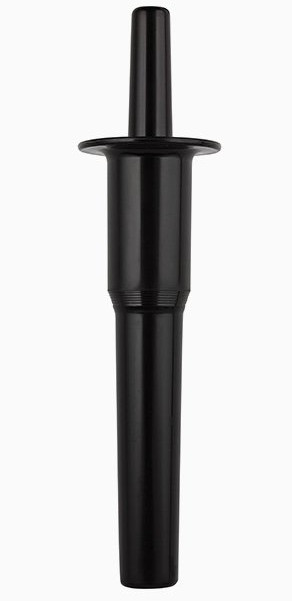
What you need to know
The Challenge
For the majority of blenders this means stopping the blender up to 10 times, opening the lid, using a spatula to press the ingredients down into the blend, and turning it back on, and repeating.
We’ve been making sorbet weekly for over ten years and have found that this process is cumbersome enough that most people are likely to just not do it as it takes too much work.
What’s the Solution?
The solution we’ve found to make this very easy, easy enough such that our readers stick with it over the long term, is by using a blender that comes with an attached tamper device.
Vitamix is currently the only brand that include a tamper with every model. Furthermore, Vitamix invented the tamper for use with blenders over 20 years ago.
If your goal is to make sorbet regularly as a weight loss tool we highly recommend a brand that includes a tamper. The best overall value blender we recommend that comes with a tamper is the Vitamix 5200.
Tip: If Sorbet is on your wish list and you want save money we recommend a certified reconditioned Vitamix 5200 which is $150 cheaper.
6.) Hummus & Pesto (Sauces, Dips, Dressings)
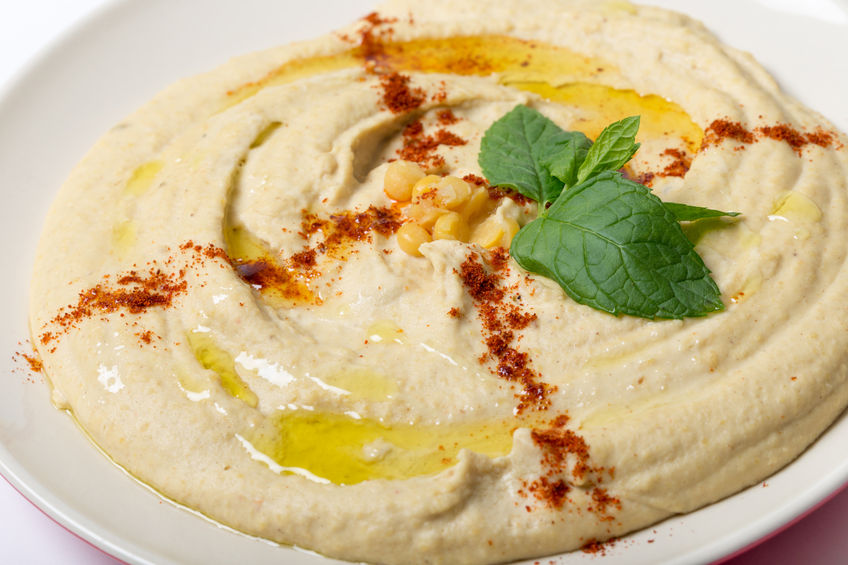
Why make it?
Hummus is also one of the best foods to have on hand when you get a craving for snacks. It stores for a couple weeks, and you can make 1-2 weeks worth of Hummus in less than 15 minutes for up to 80% less than you’d pay to buy it in the store.
Hummus is a great source of fiber, folate, and protein. Furthermore, when making hummus yourself you can customize its flavor to exactly how you want it, we make ours extra spicy with a habanero pepper.
What you need to know
The Challenge
Similar to sorbet, making hummus requires manual intervention from the user to stop the blender, push the ingredients down into the blade with a spatula, and restart blending. For lower and mid-priced blenders you’ll need to do this up to 10 times.
One workaround is to keep adding enough water so that it develops a more wet and runny consistency to that of a batter and will slowly fall back into the blade. However, if you want it to be smooth and creamy like store-bought hummus we don’t recommend this approach.
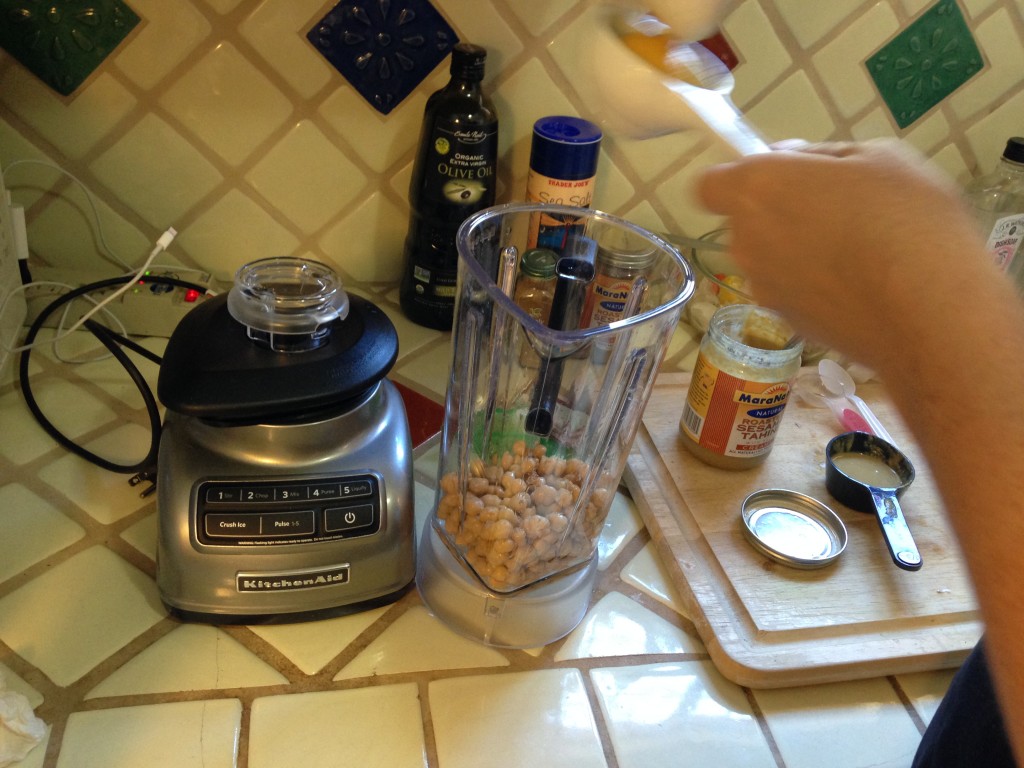
What’s the solution?
We found two brands that handle hummus better due to design advantages. The first option is the Ninja brand of blenders. They work better with Hummus because they have a patented vertical blade system which blends all the way up through the container, not just at the bottom. These blades are able to blend the chickpeas better and from our experience we only have to intervene with a spatula once or twice.
The drawback to using a Ninja however is the cleanup process. The blades are extremely sharp and should only be dishwasher cleaned. Thus, if you plan to blend daily we’d recommend our next option…
The best option for hummus is to use a blender with an included tamper device. This makes the process much easier, and allows you to manually push the hummus down into the blade while it’s blending. Vitamix blenders include a tamper with every model, and the Vitamix 5200 is our recommended best blender for the money.
7.) Nut Butters

Why make it?
Nuts such as almonds, walnuts, brazil nuts, are one of the top rated superfoods packed with healthy fats, fiber, and important vitamins and minerals such as selenium, vitamin E, and omega-3 fatty acids.
Regular nut consumption has been proven to reduce the risk of heart disease and type 2 diabetes, and lowers the risk of obesity.
Making batch of your own nut butter will not only be up to 80% cheaper than buying it in the store. Homemade nut butters can also last up to 2 weeks when stored in a refrigerated mason jar. With your own nut butters you can replace less healthy peanut and preservative packed butters purchased from the store with your own healthier options.
What you need to know
Nut butters are among the most advanced type of recipe to make in a blender, and they require a little more time and practice to really perfect.
Nut Butter Tip #1: Be aware that by adding water to any nut butter recipe you are creating the opportunity for mold growth, so we recommend not to soak any nuts before blending as the shelf life will be much longer.
Nut Butter Tip #2: All nuts will have to be roasted in order for them to be able to release their oils during blending to create a creamy buttery texture, if you attempt to blend unroasted nuts you would need to add your own oil such as coconut or olive oil. The easiest option is to just buy roasted nuts from the store.
While blending nuts, similar to sorbet and hummus, you’ll have to use some manual intervention to push the almonds into the blade.
For this we don’t recommend using a spatula, as you’ll need to continuously push the nuts into the blade during the whole process.
The only options we recommend for this are either using a Vitamix (which comes with a tamper device for pushing ingredients into the blade) or a Blendtec with their Twister Jar.
Blendtec’s Twister jar must be purchased separately from the standalone blender, while the standard wet container that comes with Vitamix blenders can be used for nut butters. However, if you plan to blend more than once per week it is recommend you also separately purchase Vitamix’s Dry Container, which has a blade that actually pushes ingredients up instead of down.
Sources:
https://www.youtube.com/watch?v=Z9CfpY3ON9I (Overall tips on blending nut butter)
https://www.vitamix.com/Find-Recipes/P/E/Peanut-Butter (recipe created for use with Vitamix’s standard “Wet” Container)
http://cdnfile.vitamix.net/household/recipes/Peanut-Butter-recipe.mp4 (a video demonstration of making peanut butter using a Vitamix 640z standard wet container.)
8.) Margaritas & Crushed Ice
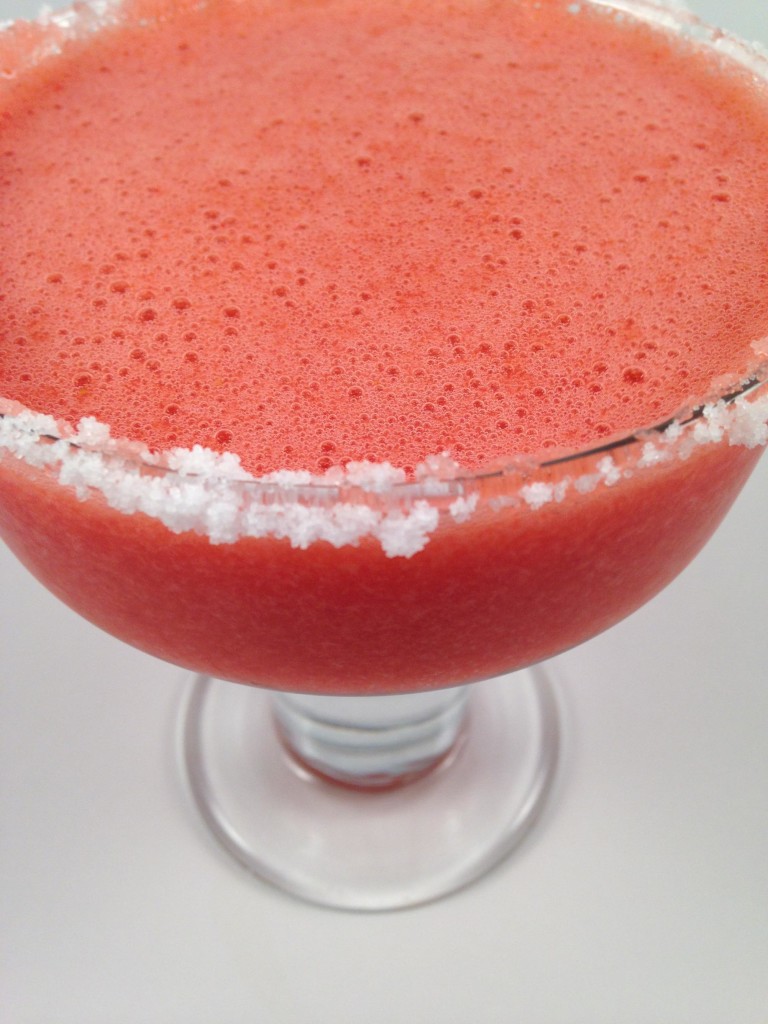
Why make it?
The ability to make frozen drinks such as margaritas, daiquiris, and pisco sour is not only fun, but it gives you another yet reason to have a great blender.
With a professional blender your margaritas and icy cocktails will be equivalent to that of restaurant quality. It can take practice, but it’s worth learning. So what’s the best blender for crushing ice?
What you need to know
Most blenders are capable of blending ice. However, most lower and mid-priced blenders will leave icy chunks.
When making margaritas the ice to liquid ratio is the most important factor. You’ll need twice the measured volume of ice to liquid for best results, and you’ll need a blender with professional blend quality if you want restaurant quality taste and texture.
The more you blend the ice the smooth and better texture it acquires. However, the smaller particle sizes means they will melt much faster, and thus you’ll need to serve and drink them right away.
9.) Dry Blending (Flour, Grains, Dough)
If you are a frequent baker, eat gluten-free, or want to grind whole grains into fresh homemade flours then getting a blender that can also perform this function makes sense.
Why make it?
A high-powered blender can make silky flour or grinds from whole grains, chia seeds, and coffee beans in less than 60 seconds, so it is very easy to do at home.
Expert’s Quote: “The whiter the bread, the quicker you’re dead. The bread and flour you buy at the local supermarket is packed with [unhealthy] levels of sugars and salts.” Tommy Richardson – Raw Blends
What you need to know
Many people who make their own flours at home use either a roller miller or a food processor.
However, both the high-powered Vitamix and Blendtec brands offer the ability to mill and process grains into flour.
Blendtec’s standard container can be used to mill grains, however, Vitamix recommends that if you are going to frequently process grains that you purchase their separate dry container, which costs and extra $144.
However, keep in mind that all of Vitamix’s standard bread or grain recipes allow for use of the standard container.
Source: http://www.blendtec.com/blog/grinding-grains-video-recipe-2/
How important is blend quality? And what exactly is “professional blend quality”?
We define professional blend quality as what you would experience from a Jamba Juice smoothie, soup from a restaurant, or a finely blended Frappacino from Starbucks.
You might be asking:
Ok, so why is this important?
The answer: It makes a HUGE difference.
Blend quality is very important in that directly relates to how much people like to drink or eat the resulting recipe.
The blend quality of a lower or mid-priced blend will typically leave behind SIGNIFICANT extra seeds and pieces.
To demonstrate the difference in blend quality between a mid-priced vs a high-end blender we blended the following ingredients in a Breville Hemisphere Control and a Vitamix 5200 for 40 seconds:
- Fresh Blackberries: 1/2 cup (84 grams)
- Fresh Celery: 1/2 cup (54 grams)
- Fresh Kale: 1/2 cup (20 grams)
- Frozen Mangos: 1/2 cup (79 grams)
- Water: 1 cup (236 grams)
The resulting yield was then filtered through a medical grade sieve with a mesh diameter of 850 microns.
The Vitamix 5200 ($329) had less than 0.5 grams left in the sieve. The Breville Hemisphere ($199) on the other hand, had more than 8 grams of seeds, fibrous green stalks, and chunks.
To put this in perspective, 8 grams is the equivalent weight of 16 whole leaves of baby spinach, almost that of a small side salad.
People who use a blender without professional blend quality don’t usually end up being successful with their blender over the long term.
Why?
It simply just doesn’t taste that good to have seeds and bitter green bits left in a smoothie. It will taste chunky and bitter.
Using a blender with professional blend quality will make you want to use your blender every day.
Buyer’s Tip: Our comparison tool allows you to see the top blenders with professional blend quality and any other additional features you want.
What is the overall best value blender for the money?
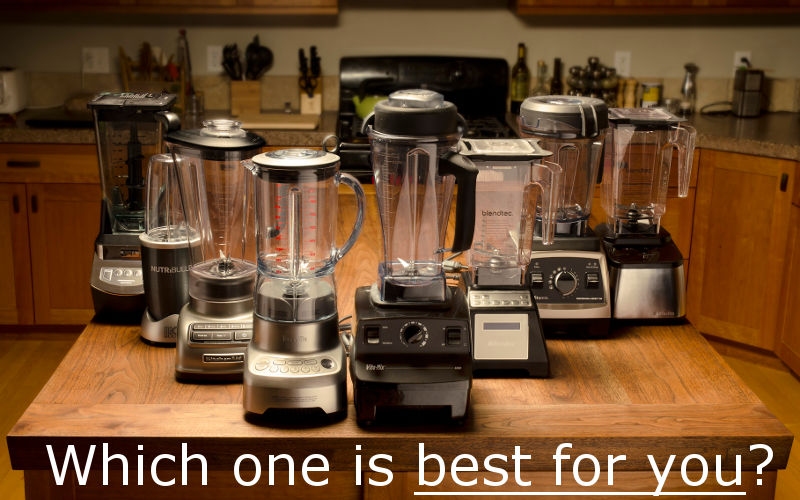 If you’re looking for a blender that does a great job at making everything with both fast & easy cleanup and professional blend quality the Vitamix 5200 is our top pick.
If you’re looking for a blender that does a great job at making everything with both fast & easy cleanup and professional blend quality the Vitamix 5200 is our top pick.
Buyer’s Tip: You can save up to $150 off a new Vitamix by checking availability from their Certified Reconditioned 5200 Inventory. These include all new containers and accessories. In most cases they were returned without being used, but can’t be sold as new. If you are lucky enough to find one in stock we suggest going for it!
The default container that comes with the Vitamix 5200 allows you to make every standard blender recipe.
If you are looking for the best value and don’t need a blender that makes all of the standard 9 recipe categories we recommend using our Compare Tool, checking off the “can make” items you want to make, and then sorting the list by price.
*Keep in mind the pros and cons for each blender, as less expensive blenders may not allow for fast & easy cleanup or have professional blend quality.
What blenders do Starbucks and Jamba Juice use?
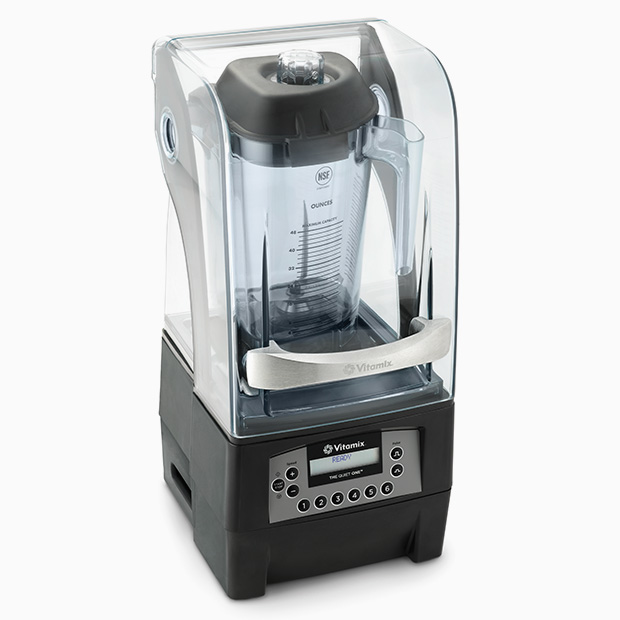
Jamba Juice and Starbucks are synonymous with restaurant grade silky smooth smoothies and fine blended Frappacinos.
Both currently use Vitamix blenders.
Keep in mind though that these blenders have been customized to perform well for just one or two specific recipes made by these chains. Their blenders additionally include dampening containers surrounding the motor which significantly reduces the noise output.
Pro Tip: If you are looking for the same quality blend as these chains in either smoothies or soups we strongly recommend the Vitamix 5200, which is the overall best value blender that can do every task well.
Why don’t high-end blenders have glass jars?
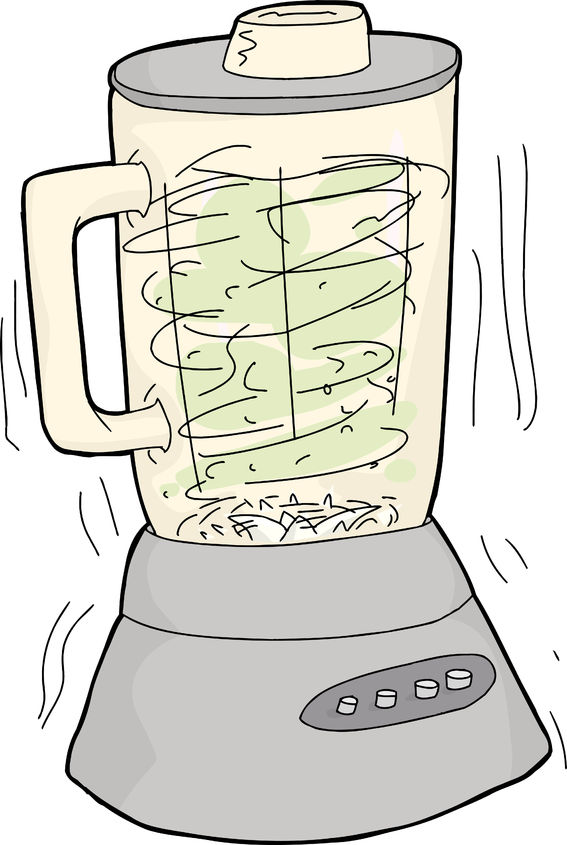
Many people wonder why high-end blenders don’t have glass containers. We see often see this comment or critique in different food forums, criticizing Vitamix, Blendtec, or other high-end professional blenders for having “cheap” or “non-glass” containers.
So are glass containers good?
The difference however couldn’t be further from the truth.
Because higher powered blenders operate at such a high-speed glass can’t be used for safety reasons. High vibrations from the motor would cause the glass to shatter.
Therefore, any time you see a blender with a glass container this tells us that the motor has significantly less power output than that of a high powered Vitamix or Blendtec.
Most high-end blenders are now using a material called Eastman Tritan Copolyester. It is BPA-Free, light weight, and highly durable. Blender containers, or “blender carafes” made of Tritan Copolyester are actually much lighter than glass and are much more versatile and easy to handle and clean.
